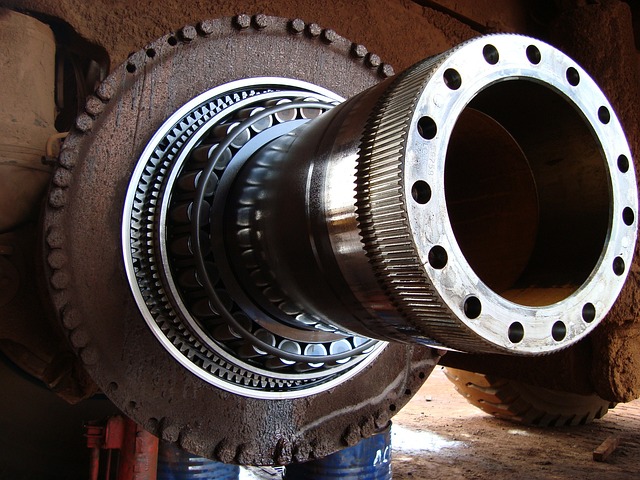(1) The runner of the counterattack turbine is completely immersed in water during the working process. When the pressure water flows through the runner blades, the blade changes the size and direction of the pressure and velocity, and the water flow produces a reaction force on the runner. A rotational torque is formed to rotate the runner. According to the direction of the water flow through the runner, the counter-acting turbine is divided into four types: Francis, axial, diagonal and tubular.
① Francis turbine. When the water flows through the runner, it flows radially and then flows out axially. With simple structure, reliable operation and high efficiency, it is the most widely used hydraulic turbine in modern times. The applicable water head range is generally 20-450 meters, and the current maximum has reached 800 meters, and the maximum unit capacity has reached 1 million KW.
②Axial flow turbine. When the water flows through the runner, it flows axially and then flows out axially. According to whether its blades can rotate during operation, it can be divided into two types: fixed-blade type and rotary-blade type.
The blades of the axial-flow fixed-blade turbine are fixed on the hub, which is simple to manufacture, but when the water head and flow change, the efficiency does not change much. Therefore, it is suitable for hydropower stations with small changes in load and small head changes. The applicable water head range is generally 3-50 meters, and the maximum machine-level capacity has reached 130,000 kw.
The blades of the axial-flow paddle turbine can rotate during operation, and can maintain high efficiency when the water head and flow change. At present, the applicable water head has reached 88 meters, and the maximum unit capacity has reached 250,000 kw.
③ Diagonal flow turbine. The blades of the water flow in and out of the runner are oblique, and the axis of rotation of the blades forms an angle with the axis of the turbine. The high efficiency zone is wide, so it is suitable for hydropower stations with large changes in water head and flow. The applicable water head is between 20-200 meters, and the maximum unit capacity is up to 250,000 KW. When made into a pump turbine, it can be used in pumped storage power stations.
Tubular turbine. The runner is similar to the axial flow type, and the water flows through the runner basically along the axial direction, so it has good flow conditions and improves the efficiency of the turbine. Tubular turbines are generally horizontal, which can reduce and simplify the structure of the plant. The amount of civil engineering is small, and it is suitable for low-head hydropower stations below 25 meters. The current maximum unit capacity is 55,000 KW.

(2) The characteristic of the pelton turbine is: the pressurized water flow is completely converted into kinetic energy after being ejected from the nozzle to impinge the rotation of the runner; at the same time, the water flow only impacts part of the bucket blades and does not fill all the flow passages, and the runner works under atmospheric pressure. Commonly used pelton turbines have two types: cutting type and inclined-jet type.
①Cutting type turbine: Its characteristic is that the nozzle jet impacts the bucket blade along the tangent direction of the runner’s circumference. It is the most widely used pelton type turbine. It is suitable for hydropower stations with high water head (1000-2000 meters) and small flow. At present, the highest water head in the world has been applied to 1,767 meters, and the maximum unit capacity is 315,000 KW.
②The inclined-jet turbine: Its characteristic is that the jet direction of the nozzle forms an angle (about 25.5°) with the rotating plane of the runner. It enters the bucket from one side of the runner and flows out from the other side. The applicable water head is 25-300 meters.
(3) The hydraulic turbine is divided into two types, vertical and horizontal, according to the different installation methods of the main shaft. The main shaft vertical device is called a vertical type. The generator is located on the upper part of the turbine. Its position is high and it is not susceptible to moisture. It occupies a small plant area, but the plant height is large. Vertical devices are mostly used in large and medium-sized hydropower stations. The horizontal axis of the main shaft is horizontal. The generator and the water turbine are arranged at the same elevation, which can reduce the height of the plant. However, the generator is susceptible to moisture and the plant area is large. It is mostly used in small hydropower stations.

As a China leading permanent magnet motor supplier, Enneng can make perfect customization for different customers according to different demands. Enneng’s main products include TYB Series Standard Type Permanent Magnet Motor, TYDP Series Direct Drive and Gearless Motor, and FTYP series of three-phase permanent magnet AC synchronous motors, etc. Whatever you need, our experienced engineers shall provide the effective solution as you required. Your demand is always what we pursue!